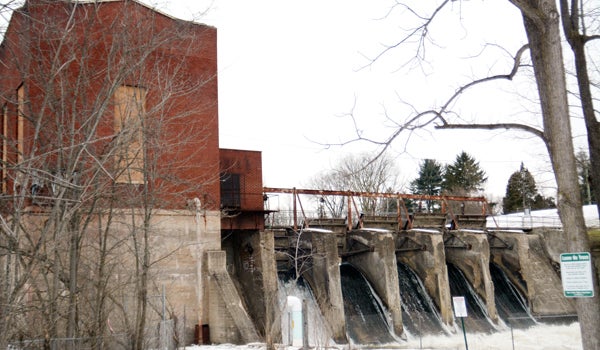City stands behind decision despite company’s plea to reconsider
Published 8:55 am Monday, February 6, 2017
A hydroelectric redevelopment company that has proposed restoring the Pucker Street Dam has asked the Niles city council reconsider decommissioning the dormant powerhouse that sits on the Dowagiac River.
On Jan. 31, Falling Waters Chairman David Snyder wrote a letter to council members asking them to take into account the green energy the dam could produce. Snyder stated that an equipment supplier verified that if restored, the power plant could produce 1 megawatt-hours of energy, enough to power 1,000 homes.
“I ask you and your fellow council members to reconsider your votes for removal,” Snyder said. “And become an advocate for green energy by transferring the Pucker Street Power plant to Falling Waters LLC.”
The city has owned the dam since 1894. The dam produced power for about 60 years, until various maintenance problems. The dam has not produced power since 1993. The city had heard a proposal by the northern Indiana based Falling Waters, but in 2013, city council members voted to remove the deteriorating dam and restore the Dowagiac River to its natural state.
City Administrator Ric Huff said the city’s concern with Falling Waters’ proposal to restore the dam stems from the company’s lack of financial backing. Snyder said that it would cost Falling Waters approximately $3.5 million to restore the dam and powerhouse and replace equipment.
In a phone interview Saturday, Snyder said the project could be covered by a number of green grants and loans.
“Well there is no guarantee they would get a penny in grant money,” Huff said. “Our response to Falling Waters has [been] when you can demonstrate that you actually have the financial resources to do what you are saying you can do, then we will talk.”
Huff said the city does not believe the restored dam could be a future financial gain for Niles. In 2009, the city commissioned engineers from Kleinschmidt to conduct a study of the dam. According to Huff, Kleinschmidt’s study found that if restored, it would take the powerhouse 22.7 years to turn a profit. Huff has said one megawatt hour of energy is not enough to justify the cost.
The city has a deadline of 2018, mandated by the state of Michigan, to either remove the dam or restore it.
Despite several complications since voting for removal, the city stands behind their decision. The project was originally projected to be around $1.8 million, but then the city found out that removing the dam could destabilize the Pucker Street Bridge, so additional funds would be needed and the amount of sediment built up behind the bridge was larger than expected, so it would take more equipment and management to remove, bringing the cost for removal to an approximate $3.4 million.
Two natural gas pipelines owned by ANR Company run under the Dowagiac River that are covered by sediment would also have to be removed. Huff said the company has already done the engineering and the pipelines are expected to be removed.
To cover some of the removal cost, residents have been paying a surcharge on their electric rates at about $2.50 a month. The surcharge has so far raised about a $1 million, Huff said. Another half a million from surcharges is also expected. The city has also raised around $1.5 million in grant funds, with another half million expected, Huff said.
Snyder cited residents paying an electric rate surcharge as only one of the major costs associated with decommissioning the dam.
If the dam and powerhouse are removed, Snyder said, the city forfeits the chance to create a tourism opportunity that could draw a fisherman population as well as those eager to tour a working hydroelectric dam. Currently Snyder said between 800 to 900 fishermen utilize the area where the dam’s water pools to catch steelhead fish. These fisherman also buy supplies from local stores.
Snyder criticized the plan to dump the dam rubble into the local landfill, which he said will take up space and cause air pollution during the removal phase.
The restoration project could also generate 10 temporary jobs and two part-time jobs for powerhouse operation and stream monitor. Tax revenue could also be generated, though Snyder said that a county assessor had not yet done the estimates.
If Falling Waters purchases the dam, Snyder said they plan to make investments to the neighboring Losensky Park, where they will install restrooms.
Without a financially sound plan for restoration, the project possess risk for the city, Huff said. While the state of Michigan has laws that will aid a city in the event that a private organization goes bankrupt, such cost could impact the city’s relationship with the state and take up grant monies that could otherwise be used for different projects, Huff said.
When asked to respond to these comments, Snyder said he had faith that the company could find grants.
“There is no shortage of grants and loans out there,” he said.
Snyder said he is aware of several potential grants, but that he cannot apply for them until the company has ownership of the dam.
According to several archived Niles Daily Star articles, the dam removal has also been supported by the Michigan Department of Natural Resources, who said that the dam removal could restore the river to its natural state.
Huff said until a sound financial plan is in place for restoration, the city will continue to move forward with plans for decommissioning the dam.







